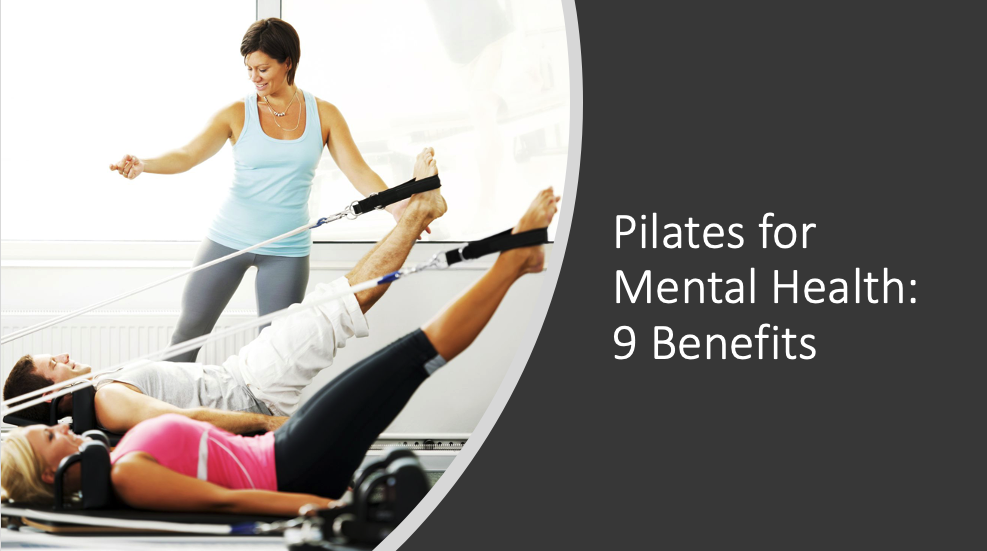Mental Health and Pilates Fitness
As we continue to navigate through the global pandemic, there has been an increase in awareness about the importance of mental health. People are looking for ways to cope with the stress and anxiety that comes with the uncertainty of these times. Exercise has been proven to have a positive impact on mental health, and Pilates is one form of exercise that's gaining popularity.

What is Pilates?
Pilates is a low-impact form of exercise that focuses on improving flexibility, strength, and balance. It involves a series of movements that target specific muscles and is often done on a mat or with equipment like a reformer.
How does Pilates help with Mental Health?
Pilates has been shown to have a positive impact on mental health in several ways:
- Reduces stress and anxiety
- Improves mood
- Increases self-esteem
- Boosts brain function
Reduces stress and anxiety
Pilates involves deep breathing and mindful movement, which can help reduce stress and anxiety. Focusing on the movements and breathing can help quiet the mind and bring a sense of calm.
Improves mood
Exercise has been shown to release endorphins, which are natural mood boosters. Pilates can improve mood by releasing these endorphins and providing a sense of accomplishment.
Increases self-esteem
Pilates can help improve self-esteem by building strength and flexibility. As people progress in their practice, they may feel a sense of pride and accomplishment.
Boosts brain function
Studies have shown that exercise can improve brain function, including memory and cognitive ability. Pilates can be a great way to incorporate exercise into your routine and improve brain function.
The Benefits of Pilates for Physical Health
Pilates offers a range of benefits for physical health, including:
- Improving flexibility
- Strengthening muscles
- Improving posture
- Reducing risk of injury
Improving flexibility
Pilates involves a range of movements that help improve flexibility. The movements are designed to stretch and lengthen muscles, which can help improve range of motion.
Strengthening muscles
Pilates is a full-body workout that targets specific muscle groups. It can help strengthen muscles, including the core, legs, and arms.
Improving posture
Poor posture can lead to a range of health issues, including back pain and poor circulation. Pilates can help improve posture by strengthening the muscles that support the spine.
Reducing risk of injury
Pilates is a low-impact form of exercise that is gentle on the joints. It can help reduce the risk of injury by improving balance and stability.
How to Get Started with Pilates
If you're interested in trying Pilates, here are some tips to get started:
- Find a qualified instructor
- Start with a beginner's class
- Invest in proper equipment
- Commit to a regular practice
Find a qualified instructor
It's important to find a qualified instructor who can guide you through the movements and ensure you're doing them correctly. Look for an instructor who is certified by a reputable organization.
Start with a beginner's class
If you're new to Pilates, start with a beginner's class. This will give you a chance to learn the basics and build a strong foundation.
Invest in proper equipment
While Pilates can be done on a mat, investing in proper equipment like a reformer can enhance your practice. Talk to your instructor about what equipment is necessary for your level.
Commit to a regular practice
Like any form of exercise, consistency is key. Commit to a regular Pilates practice to see the full benefits of the exercise.
The Pros and Cons of Pilates
Like any form of exercise, Pilates has its pros and cons.
Pros
- Low-impact
- Improves flexibility and strength
- Can be done with minimal equipment
- Can be modified for different levels
Cons
- May not be suitable for those with injuries
- Can be expensive if done with equipment and a qualified instructor
- May not provide enough cardiovascular exercise for some
- May not be as effective for weight loss as other forms of exercise
FAQs
What should I wear to a Pilates class?
You should wear comfortable, form-fitting clothing that allows for movement. Avoid loose clothing that may get in the way during movements.
Is Pilates good for weight loss?
While Pilates can help improve muscle tone, it may not be as effective for weight loss as other forms of exercise. It can, however, be a great addition to a weight loss program.
Can Pilates help with back pain?
Yes, Pilates can help improve posture and strengthen the muscles that support the spine, which can help alleviate back pain.
How often should I do Pilates?
It's recommended to do Pilates at least 2-3 times per week to see the full benefits of the exercise.
